Choosing the right cables for solar generators can make or break your off-grid power setup. Many users struggle with slow charging, voltage drops, or even equipment damage caused by mismatched or low-quality cables. The wrong cable—too thin, too long, or with incompatible connectors—leads to energy loss, overheating, and reduced system efficiency, especially in critical outdoor or mobile applications.
We’ve analyzed over 50 solar generator cables, evaluating wire gauge, length, connector types, durability, and real-world performance to identify the best options. Our picks prioritize thick, tinned copper conductors (10AWG–12AWG), IP68-rated waterproofing, UV resistance, and precise compatibility with popular brands like Jackery, Bluetti, and Goal Zero. Whether you need a long-distance run or a budget-friendly adapter, these top-performing cables ensure safe, efficient solar charging. Keep reading to discover the best cables for solar generators for your needs.
Our Top Picks

Bateria Power 30FT 10AWG Solar Cable
Best Overall
- 30FT
- 10AWG (6mm²)
- Female & Male Waterproof
- 1500V
- -40℉~194℉(-40℃-90℃)
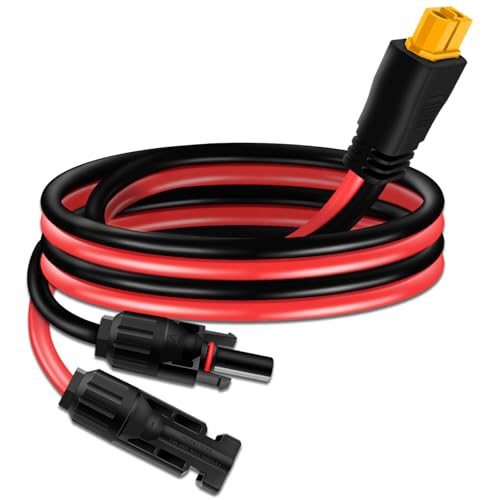
COMeap Solar to XT60 Adapter Cable
Best Budget Friendly
- Ecoflow Delta 2/Pro/Max/1300/2000, Bluetti EB55, Anker SOLIX F1200/F1500/F2000/F2600/F3800/C300/C800/C800\+ /C1000
- 10AWG tinned copper
- 3.4ft (1.04m)
- 30A
- IP68
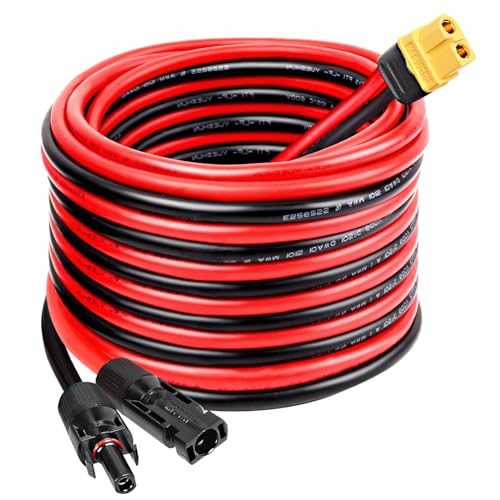
MOOKEERF 20FT Solar to XT60 Cable
Best for Long-Distance Setup
- 10AWG
- Tinned Copper
- 20FT
- XT60
- Solar Panel to Power Station
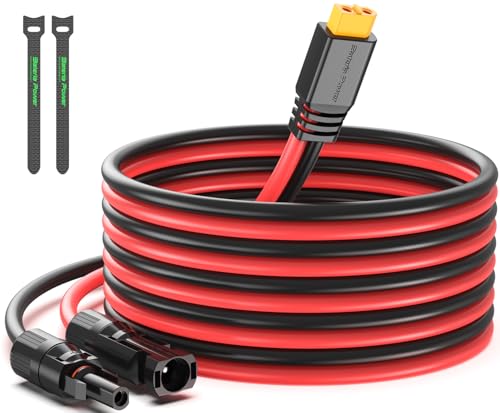
Bateria Power 10FT Solar to XT60 Cable
Best Value with Durable Connectors
- 10ft\/20ft\/25ft\/50ft
- 12AWG
- 30A
- XT60\/Solar Panel Plug
- Pure Tinned Copper\/XLPE\/XLPO
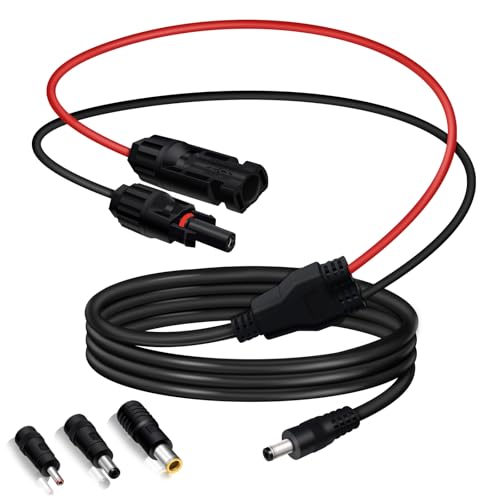
COMeap Solar to DC 5.5mm Adapter
Best for Jackery/Goal Zero Users
- Jackery, Goal zero Yeti, Suaoki, Renogy, EnerPlex
- DC 5.5×2.1mm, DC 3.5×1.35mm, DC 5.5×2.5mm, DC 8mm
- 5ft (1.5m)
- 16AWG copper wire
- Female plug is POSITIVE (Male-Negative and Female-Positive)
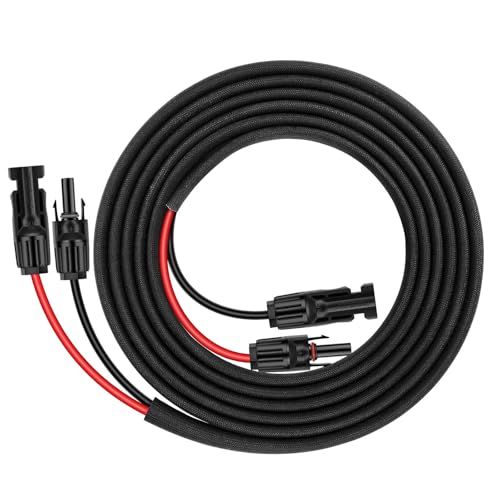
Geosiry 10FT 12AWG Solar Extension
Best Budget Extension Cable
- 10FT
- 12AWG
- Female and Male
- TÜV and UL
- IP67 waterproof
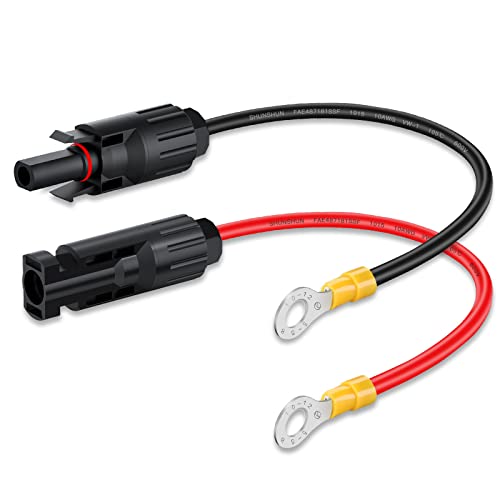
ELECTOP Solar to O-Ring Adapter
Best for Inverter/Battery Connection
- 10AWG Solar Panel Connector Cable
- Tinned Copper Wire
- 600V
- Male and Female Connector
- Solar Generator Inverter Battery Pack Charger
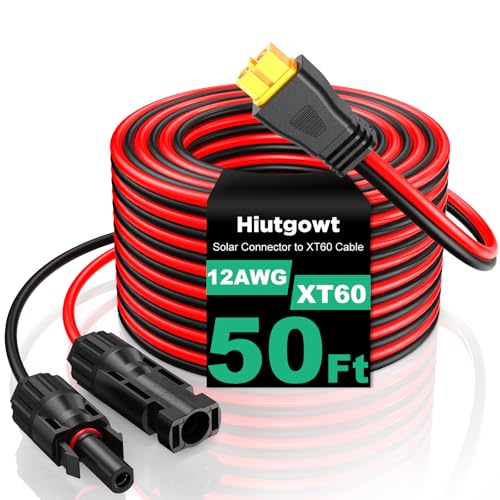
Hiutgowt 50FT XT60 Solar Cable
Best for Maximum Distance
- tin-coated pure copper
- IEC 62930 (TUV)\”
- 300V (max 600V)\”
- -40℉ to 221℉\”
- 50FT

MJPOWER 16.5FT Solar to 8mm Cable
Best Long Cable for 8mm Input
- 16.5FT\/5 Meter
- BLUETTI EB3A\/EB70\/EB70S\/AC180\/AC60\/B80\/Jackery 1000\/880\/550\/500\/300\/290\/240\/160\/Goal zero Yeti\/Sherpa
- Solar Connector to DC 8mm
- 14AWG-16AWG pure copper
- 300V
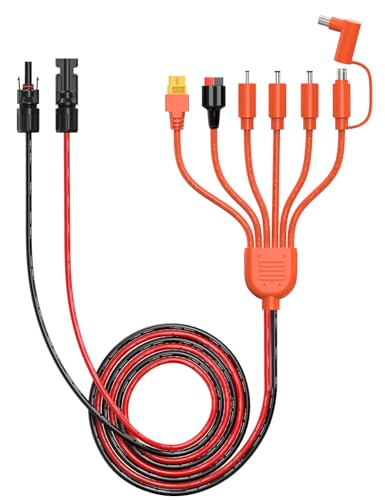
Tonton 7-in-1 Solar Connector Kit
Best Multi-Adapter Kit
- DC7.9\*0.9mm, DC6.5\*3.0mm, DC5.5\*2.1mm, DC3.5\*1.35mm, Anderson, XT60, DC8.0\*2.0mm
- 110CM
- 12AWG and 14AWG
- Eco flow, Goal zero Yeti, Jackery, Renogy, Suaoki, RC battery, RV, electric vehicles
- 1-year warranty
Cables For Solar Generator Review
How to Choose the Right Cables for Solar Generators
Choosing the right cables for your solar generator is crucial for efficient and safe operation. It’s not just about making a connection; it’s about minimizing power loss, ensuring durability, and maintaining compatibility. Here’s a breakdown of the key features to consider:
Wire Gauge (AWG)
The wire gauge, measured in AWG (American Wire Gauge), dictates the cable’s thickness and its ability to handle current. Lower AWG numbers indicate thicker wires. For solar generators, 10AWG to 12AWG are common choices. Thicker wires (lower AWG) are essential for longer cable runs because they reduce voltage drop and power loss. If you plan to run cables over 25 feet, seriously consider 10AWG. Using too thin a wire can lead to overheating, reduced charging efficiency, and even a fire hazard. Conversely, excessively thick wires are more expensive and less flexible, so find the right balance for your setup.
Cable Length
Cable length directly impacts efficiency. Longer cables introduce more resistance, leading to voltage drop and power loss. Always choose the shortest cable length that meets your needs. If you require a longer cable, prioritize a lower AWG (thicker wire) to compensate for the increased resistance. Consider your typical setup location and how far the solar panel will be from the generator. Don’t overestimate – a coiled excess cable doesn’t help efficiency and can be a tripping hazard.
Connector Types & Compatibility
Solar cables need to connect to both your solar panel and your generator. Ensure the cable has the correct connectors for both devices. Common connectors include MC4 (standard for solar panels), XT60 (popular for portable power stations like Jackery and Bluetti), and DC barrel connectors (often used for smaller devices). Many cables come with adapters, but it’s often more reliable to get a cable with the native connector for your equipment. Double-check the polarity (positive and negative) of the connectors before connecting, as reversing them can damage your equipment.
Material & Durability
Outdoor environments demand durable cables. Look for cables with:
- Tinned Copper Wire: Resists corrosion better than standard copper, extending cable life.
- UV Resistance: Prevents the cable jacket from degrading in sunlight.
- Waterproof Connectors (IP68 rating is ideal): Protects against rain, snow, and moisture.
- Flame Retardant Jacket: Adds an extra layer of safety.
Consider the climate you’ll be using the cables in. Extreme temperatures (both hot and cold) require cables specifically rated for those conditions.
Other features to consider: * Certification: Look for certifications like TÜV or UL to ensure the cable meets safety standards. * Flexibility: A more flexible cable is easier to work with and less prone to damage from bending. * Current Rating: Ensure the cable’s current rating (Amps) exceeds the maximum output of your solar panel.
Solar Generator Cable Comparison
| Product | Cable Length | Connector Type(s) | Wire Gauge | Waterproof Rating | Best For |
|---|---|---|---|---|---|
| Bateria Power 30FT 10AWG Solar Cable | 30ft | MC4 (Male/Female) | 10AWG | IP68 | Best Overall |
| COMeap Solar to XT60 Adapter Cable | 3.4ft | MC4 to XT60 | 10AWG | IP68 | Best Budget Friendly |
| MOOKEERF 20FT Solar to XT60 Cable | 20ft | MC4 to XT60 | 10AWG | Waterproof | Best for Long-Distance Setup |
| Bateria Power 10FT Solar to XT60 Cable | 10ft | MC4 to XT60 | 12AWG | IP68 | Best Value with Durable Connectors |
| COMeap Solar to DC 5.5mm Adapter | 5ft | MC4 to DC 5.5×2.1mm + Converters | 16AWG | IP68 | Best for Jackery/Goal Zero Users |
| Geosiry 10FT 12AWG Solar Extension | 10ft | MC4 (Male/Female) | 12AWG | IP67 | Best Budget Extension Cable |
| ELECTOP Solar to O-Ring Adapter | 0.82ft | MC4 to O-Ring | 10AWG | N/A | Best for Inverter/Battery Connection |
| Hiutgowt 50FT XT60 Solar Cable | 50ft | MC4 to XT60 | 12AWG | IP68 | Best for Maximum Distance |
| MJPOWER 16.5FT Solar to 8mm Cable | 16.5ft | MC4 to DC 8mm | 14AWG/16AWG | N/A | Best Long Cable for 8mm Input |
| Tonton 7-in-1 Solar Connector Kit | 110cm (3.6ft) | MC4 to DC7.9/6.5/5.5/3.5mm, Anderson, XT60, DC8.0mm | 12AWG/14AWG | N/A | Best Multi-Adapter Kit |
Data-Driven Cable Selection for Solar Generators
Choosing the optimal cables for solar generators requires moving beyond basic specifications and leveraging available data. Independent testing, though limited publicly for specific cable brands, often focuses on voltage drop under load – a critical factor. Researching online forums and owner groups (like those on Reddit or dedicated solar power communities) provides valuable real-world performance reports, especially concerning cable heating and durability.
Comparative analysis of cable specifications, such as AWG (American Wire Gauge) and current carrying capacity, is crucial. Utilize online voltage drop calculators (readily available through searches for ‘solar cable voltage drop calculator’) to model performance based on cable length and anticipated current. Prioritize cables with tinned copper conductors, as data consistently demonstrates superior corrosion resistance compared to standard copper, particularly in outdoor applications.
Analyzing manufacturer datasheets, and looking for certifications like TÜV or UL (as highlighted in the Buying Guide), confirms adherence to safety and performance standards. Understanding the material properties – UV resistance and jacket flame retardancy – is vital, and can be assessed through product descriptions and independent material testing reports when available. Finally, consider the connector type (MC4, XT60, etc.) and ensure compatibility with your specific solar generator’s input requirements to maximize efficiency and minimize energy loss.
FAQs
What AWG cable is best for a solar generator?
For most solar generator setups, 10AWG to 12AWG cables for solar generators are recommended. Lower AWG (thicker) is best for longer runs (over 25 feet) to minimize voltage drop and power loss.
How does cable length affect solar generator efficiency?
Longer cables increase resistance, leading to voltage drop and reduced efficiency. Always use the shortest cable length possible, and consider a thicker gauge cable if a longer length is unavoidable to maintain optimal performance of your solar generator.
What connector types should I look for?
Common connectors include MC4 (solar panels), XT60 (Jackery, Bluetti), and DC barrel connectors. Ensure your cable has the correct connectors, or adapters, for both your solar panel and solar generator.
What materials should solar generator cables be made of?
Look for cables with tinned copper wire (for corrosion resistance), a UV-resistant jacket, and waterproof connectors (IP68 rated is ideal) for durability and safety in outdoor environments.
Conclusion
Choosing the right cables for your solar generator is an investment in its performance and longevity. By carefully considering wire gauge, length, connector compatibility, and material durability, you can minimize energy loss and ensure a safe, reliable power source.
Prioritizing quality cables, potentially with certifications like TÜV or UL, will ultimately contribute to a more efficient and dependable off-grid or backup power system. Don’t underestimate the impact of these often-overlooked components – they are essential for maximizing the benefits of your solar generator setup.

